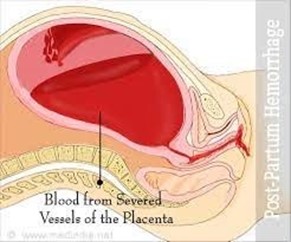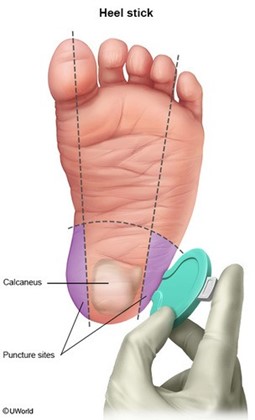A nurse is assisting in the care of a client who is experiencing a postpartum hemorrhage.
Which of the following medications should the nurse plan to administer?
Terbutaline
Methylergonovine
Magnesium sulfate
Nifedipine
The Correct Answer is B
b. Methylergonovine.
Explanation:
Postpartum hemorrhage is a significant complication that can occur after childbirth. Methylergonovine is a medication commonly used to manage postpartum hemorrhage. It is an ergot alkaloid that helps to contract the uterus, reducing bleeding. It is typically administered either intramuscularly or orally.
Option a, Terbutaline, is a medication used for the management of preterm labor by relaxing the uterine smooth muscles. It is not indicated for postpartum hemorrhage.
Option c, Magnesium sulfate, is a medication used for the prevention and treatment of seizures in patients with preeclampsia or eclampsia. It is not specifically indicated for postpartum hemorrhage.
Option d, Nifedipine, is a calcium channel blocker commonly used to manage hypertension. It is not indicated for postpartum hemorrhage.
It's important to note that the specific management of postpartum hemorrhage may vary depending on the underlying cause, severity of bleeding, and individual patient factors. The healthcare provider will determine the most appropriate interventions and medications for each case.

Nursing Test Bank
Naxlex Comprehensive Predictor Exams
Related Questions
Correct Answer is C
Explanation
The nurse should apply a heat pack 5 to 10 minutes prior to the procedure when planning to obtain blood from a newborn via a heel stick. This helps to increase blood flow to the area and makes it easier to obtain the specimen.
a) Puncturing the heel to a depth of 4 mm is too deep and can cause injury to the newborn. The recommended depth for a heel stick is 2.4 mm or less.
b) Withholding feeding prior to collecting the specimen is not necessary.
d) Elevating the newborn's foot for 15 minutes following the procedure is not necessary.

Correct Answer is A
Explanation
Keeping a baby rear-facing in the car seat until they reach the age of 2 years old or until they reach the maximum height and weight limits recommended by the car seat manufacturer is a crucial safety guideline. Rear-facing car seats provide better support for a baby's head, neck, and spine in the event of a crash, reducing the risk of severe injuries.
"I should place my baby in the car seat at a 90-degree angle." The correct positioning for a rear-facing car seat is typically between a 30 to 45-degree angle. This angle helps ensure the baby's airway remains open and prevents their head from flopping forward.
"I should position the car seat's retainer clip at the level of my baby's belly button." The retainer clip of the car seat should be positioned at armpit level, not at the level of the baby's belly button. The retainer clip is designed to secure the harness straps and should be placed across the chest, resting on the bony part of the shoulders.
"I should enable the airbag when my baby is in the front seat of the car." It is not safe to have a rear-facing car seat with a baby in the front seat of a vehicle with an active airbag. Airbags can pose a significant risk to infants due to the force with which they deploy. It is recommended to place a rear-facing car seat in the back seat of the vehicle and disable the airbag in the front passenger seat if the baby needs to ride in the front.
It is important for parents to receive proper education on car seat safety and follow the guidelines set forth by car seat manufacturers, national recommendations, and local laws and regulations.
Whether you are a student looking to ace your exams or a practicing nurse seeking to enhance your expertise , our nursing education contents will empower you with the confidence and competence to make a difference in the lives of patients and become a respected leader in the healthcare field.
Visit Naxlex, invest in your future and unlock endless possibilities with our unparalleled nursing education contents today
Report Wrong Answer on the Current Question
Do you disagree with the answer? If yes, what is your expected answer? Explain.
Kindly be descriptive with the issue you are facing.
